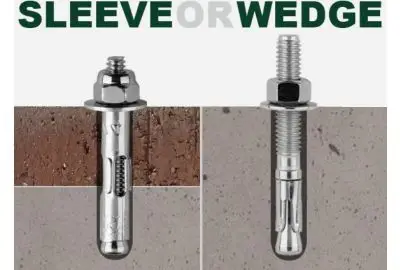Metal Anchor Bolts Manufacturers and Their Key Industry Insights
Nov . 08, 2024 23:36 Back to list
Metal Anchor Bolts Manufacturers and Their Key Industry Insights
The Importance of Metal Anchor Bolts in Construction
In the realm of construction, the reliability and strength of structural components play a pivotal role in ensuring the safety and longevity of buildings and infrastructure. One crucial component that underpins many structures is the metal anchor bolt. As a hardware factory that specializes in manufacturing metal anchor bolts, understanding their significance, applications, and the nuances of their production can provide valuable insights for engineers, builders, and architects alike.
What are Metal Anchor Bolts?
Metal anchor bolts are heavy-duty fasteners used to attach structural components to concrete and masonry. They are typically made from high-grade steel, which provides excellent tensile strength and durability. Their design can vary, featuring different lengths, diameters, and thread types to accommodate various applications. Typically, metal anchor bolts are used in the foundation of buildings, bridges, and towers, securing columns, beams, and other critical elements to ensure stability under various forces, including wind, seismic activity, and weight loads.
Applications of Metal Anchor Bolts
Metal anchor bolts are widely used across various industries. In commercial construction, they connect steel beams to concrete slabs, ensuring the structure can handle high loads without compromising safety. In industrial contexts, they support heavy machinery, providing a stable platform that minimizes vibrations and movements. Furthermore, metal anchor bolts are essential in retrofitting older structures, improving their capacity to withstand modern demands.
A burgeoning area of application is in the construction of renewable energy installations, such as wind turbines and solar panel frameworks. These installations require robust anchoring solutions to endure environmental stresses, and metal anchor bolts provide the necessary reliability. Their versatility also allows for use in residential construction, where they secure decks, porches, and additional structures to provide enhanced support.
metal anchor bolts factories

Manufacturing of Metal Anchor Bolts
The manufacturing process of metal anchor bolts involves several steps to ensure that each bolt meets stringent quality standards. It begins with selecting high-quality raw materials, usually low-alloy or carbon steels, which are essential for achieving the desired strength and corrosion resistance. Factories utilize advanced machinery for processes such as forging, which shapes the bolts into their required configurations while maintaining structural integrity.
Following forging, anchor bolts undergo heat treatment processes, including quenching and tempering, which enhance their mechanical properties. Precise specifications are vital; thus, factories often employ computerized numerical control (CNC) machines for threading and finishing processes.
Quality assurance is another critical phase in the manufacturing process. Each batch of bolts is rigorously tested for tensile strength, corrosion resistance, and dimensional accuracy to ensure that they can withstand the demands placed upon them in real-world applications. Certifications and compliance with international standards are essential to gaining the trust of clients and end-users.
Conclusion
Metal anchor bolts are indispensable components in the construction industry, serving as the backbone of numerous structural applications. Their manufacturing process, marked by precision and quality assurance, ensures that they can withstand demanding conditions while providing safety and stability to various structures. For factories specializing in producing metal anchor bolts, understanding the client’s needs and the latest engineering practices is vital for delivering products that not only meet but exceed industry expectations.
As the demand for durable and reliable construction solutions continues to grow, the role of high-quality metal anchor bolts remains more important than ever. With advancements in manufacturing technologies and materials science, the future of anchor bolts looks promising, ensuring that they will continue to play a critical role in building safe, lasting structures for generations to come.
Latest news
-
High-Quality Panel Stud Bolt Reliable Panel Stud Bolt Factory & Suppliers
NewsJul.08,2025
-
High-Precision Fine Thread Locknuts Manufacturer & Supplier Custom Solutions
NewsJul.08,2025
-
PH Imperial Stud Bolt – High Strength Fasteners from Leading Supplier & Factory
NewsJul.07,2025
-
High-Quality Allen Wrench Bolts Leading Factory, Company & Suppliers
NewsJul.07,2025
-
Wholesale Ball Stud Bolt - High Quality Supplier & Factory Price Reliable Wholesale Ball Stud Bolt Company
NewsJul.06,2025
-
High-Strength Alloy Bolts Manufacturer & Supplier Quality Alloy Fasteners Factory
NewsJul.06,2025
